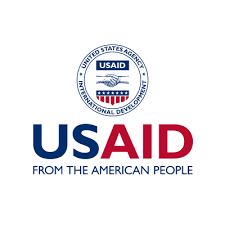Part 3: What does foreign aid actually do?
February 04, 2025
What does foreign aid actually do?
To explore the complex topic of what foreign aid does – and what it is intended to do – we will start with two extreme (yet fairly common) positions people tend to hold. When the topic of foreign aid comes up, Americans tend to take one of these sides:
“We need to put America first before we try to take care of people in other countries.”
vs.
“Those poor people in other countries need our aid – without it, they will suffer.”
While these statements may seem to be directly opposed, and we could talk at length about the moral and ethical problems of both, that’s not the point. Both arguments are based on the same misperception about American foreign aid: and that error is that aid only benefits people who are not American.
The stark reality is that the primary purpose of foreign aid is not only to “help foreigners.” It’s just as much (if not more, if we're being honest) to benefit Americans through advancing American national security, economic growth, and political power in the world.
Any source of information about foreign aid you find – including the USAID website* – clearly states that supporting American foreign policy is a primary reason we help other countries. That doesn’t mean that good isn’t being done; promoting democracy and free markets, and refusing to support governments that violate human rights, are all noble pursuits and characteristic of historical American policy positions. Humanitarian aid and economic development (when administered appropriately) have the power to lift entire populations out of poverty and offer future generations new opportunities. From public health efforts or infrastructure building to saving lives and property after disasters, we can point to much good that comes from the work that USAID and other organizations managing foreign aid do.
The areas of focus of foreign aid have changed through the years, and it’s not difficult to associate the political climate at the time with the objectives of assistance to other countries. For example, in the 1950s, one of the key goals was to “diminish the threat of communism by helping countries prosper under capitalism.” In the 60s, President John F. Kennedy created USAID as a single agency focused on foreign development and highlighted America’s “moral obligation” to be a “wise leader” and “good neighbor” to help poorer nations. While Kennedy’s approach may have been more altruistic, it remained anti-Communist with a clear purpose to advance democracy and capitalism (think Peace Corps). By the 80s, large programs replaced individual projects with to “stabilize currencies and financial systems.” By the 2000s, helping Afghanistan and Iraq rebuild from decades of war was the new focus. (All this information, and more, used to be found on the USAID History page*.)
We could spend a lot of time – and I think we should, but not here – talking about the outcomes of foreign aid, the effectiveness, and most importantly the subject from the perspective of the human beings – millions of them – in recipient nations and communities who each year receive these billions of dollars in aid. This is something as concerned citizens of the world we should take interest in. We should debate how and why we’re using our aid to create markets for the U.S. We should read books like Dead Aid and Africa Is Not A Country to hear other perspectives about American involvement in the politics, culture, and economies of other nations. And we should ask ourselves how our funds, here and abroad, are used to promote economic and social opportunity for all, not just for the wealthy.
However, what we can no longer do is shout knee-jerk, misguided opinions at each other about who should or shouldn’t receive aid based on incorrect assumptions about what aid is or does. Meanwhile, people around the world suffer, caught in the crosshairs of political and economic conflicts. As with any foreign policy, we should be thoughtful, intelligent, and rooted in the ethical and moral principle that America has claimed to advance since our nation’s inception: that all people are created equal. We should realize that as a nation blessed with abundant resources, we are obligated to recognize when we may have taken unjustly from others in the past and care about the health and quality of life for all people.
With this framework in mind, in the last blog in this series we will talk about the order issued by the White House on January 20, 2025, to pause all contracts for 90 days to “reevaluate and realign United States foreign aid” and what appears to be the (temporary) closing of USAID.
*For the purposes of this blog, we recently happened to print several pages of the USAID website that is now disabled. You can see at least some of the information that has been removed.
OTHER BLOGS IN THIS SERIES:
Part 2: What is foreign aid and who gets it?
Part 4: What is going on now and why you should care.
